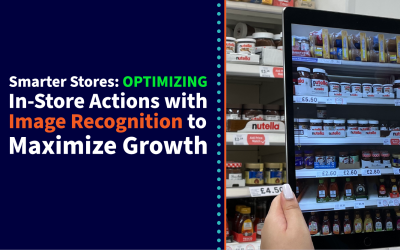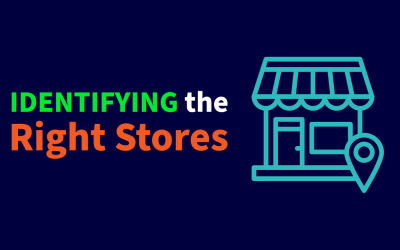ENHANCE YOUR SUPPLY CHAIN MODEL WITH DYNAMIC VELOCITY MODELING
“By 2025, 75% of retailers will fully integrate order and inventory data and optimize against fulfillment, improving conversion by 10%, customer satisfaction by 50%, and reducing the cost to serve by 25%”. (Source: IDC FutureScape Retail 2022 Predictions)
Current supply chain models that prevail among CPG manufacturers and retailers are not yet mature enough to achieve this. Even the most advanced supply chain models are imperfect and will benefit from actionable alerts to advise on any issues, and predictive alerts to provide a warning of potential issues before they occur.
Andrew Smith, Global Head of Analytics at StayinFront Retail Data Insight (RDI), shares this about Dynamic Velocity Modeling, “It all starts at store-level where supply chain issues impact the shopper experience. Data sources held by retailers, manufacturers, and their transportation providers can be integrated into a finely tuned machine learning environment to generate actionable alerts, and predictive alerts to correct, and mitigate supply chain issues impacting store level.”
As Dynamic Velocity Modeling develops, it will uncover deeper root cause insights, driving greater efficiency and growth. Think of this as a compliment to any well-established supply chain model, enabling focus and mitigation on issues that even the best models will encounter to some degree.
So how does it work? Our experience so far in multiple markets, where the Dynamic Velocity Model was pioneered, identifies three key pillars of success:
1. Focus on Retail Impact
When supply chain issues impact shopper experience at store level both retailers and CPG manufacturers lose sales. Basic algorithms with integrated POS data can generate store-level actionable alerts for OSA gaps, promotion execution underperformance, and other issues. However more advanced AI Machine Learning generates predictive alerts before issues impact the store level. Data sources, including store-level POS data, in-transit, and open orders, retail distribution center inventory levels, and manufacturer inventory levels are combined to guide the timely resolution of retail issues and provide predictive alerts to alleviate probable issues before they occur.
2. Empower Timely Intervention Along the Supply Chain
Some predictive alerts require action further up the supply chain, to prevent issues from impacting sub-optimal store level inventory. For example:
♦ Store level OSA risk: This alert can be flagged to a retailer’s distribution center when the average daily rate of sales indicates insufficient inventory remains in a particular store, where no in transit orders are scheduled to that store, and when the distribution center has stock on hand for that SKU.
♦ Promotional Inventory risk: This alert can be flagged to a retailer’s distribution center when the promotional sales level projects inventory depletion at a particular store prior to the conclusion of a promotional event, and the distribution center has stock on hand for that SKU.
♦ Distribution center risk: This alert can be flagged to a retailer’s head office when the total projected demand by stores serviced by a given distribution center indicates that the distribution center inventory is insufficient, and there is no in-transit order from the manufacturer to that distribution center.
The ability to generate predictive alerts relies upon timely availability of all data required to generate the alerts, as well as a willingness to take action at the right point in the supply chain. A key to success is to start small and focus on areas of greatest opportunity. Start with a single distribution center, with one manufacturer, and focus on top SKUs. Predictive alerts are about mitigating shopper impact on top priority SKUs.
3. Embrace Collaborative Learning
There’s nothing more frustrating than continuing to fix the same issue at store level over and over again. Cluster analysis can identify repeat instances of similar issues, whether tied to certain SKUs or brands, individual stores, distribution centers servicing certain geographies, transportation providers, or manufacturers, attracting deeper root cause analysis in areas of known opportunity for improvement.
Will you and your retail partners be ready by 2025 to fully integrate order and inventory data and optimize against fulfillment, improving conversion by 10%, customer satisfaction by 50%, and reducing the cost to serve by 25%? Lets talk.
To learn more about how StayinFront RDI is driving innovation in the use of data and technology to improve store-level conditions and shopper experience, visit our website or send us an e-mail and one of us will follow up with further discussion:
Derrick Jones
Commercial Director, StayinFront RDI
djones@stayinfront.com
Pablo Rivera Rio
Commercial Director LATAM, StayinFront
privera@stayinfront.com







